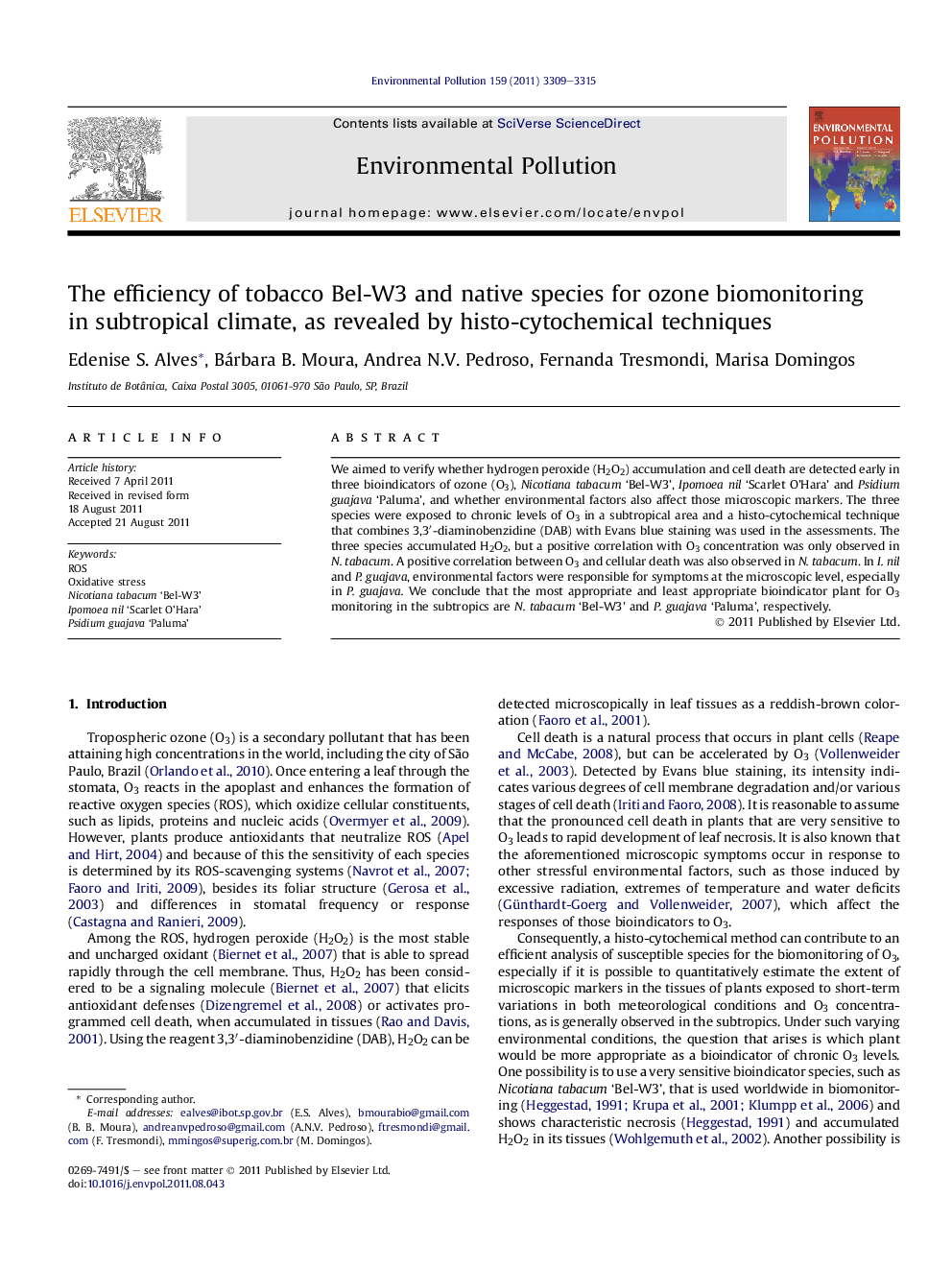| Article ID | Journal | Published Year | Pages | File Type |
|---|---|---|---|---|
| 4425225 | Environmental Pollution | 2011 | 7 Pages |
We aimed to verify whether hydrogen peroxide (H2O2) accumulation and cell death are detected early in three bioindicators of ozone (O3), Nicotiana tabacum ‘Bel-W3’, Ipomoea nil ‘Scarlet O’Hara’ and Psidium guajava ‘Paluma’, and whether environmental factors also affect those microscopic markers. The three species were exposed to chronic levels of O3 in a subtropical area and a histo-cytochemical technique that combines 3,3′-diaminobenzidine (DAB) with Evans blue staining was used in the assessments. The three species accumulated H2O2, but a positive correlation with O3 concentration was only observed in N. tabacum. A positive correlation between O3 and cellular death was also observed in N. tabacum. In I. nil and P. guajava, environmental factors were responsible for symptoms at the microscopic level, especially in P. guajava. We conclude that the most appropriate and least appropriate bioindicator plant for O3 monitoring in the subtropics are N. tabacum ‘Bel-W3’ and P. guajava ‘Paluma’, respectively.
► H2O2 and cell death occur in response to O3 and other stressful factors. ► H2O2 can be detected by DAB and cell death by Evans blue staining. ► These techniques contribute for analysis of susceptible bioindicator species. ► H2O2 and cell death were explained by high levels of O3 in N. tabacum ‘Bel-W3’. ► N. tabacum is the most appropriate plant for monitoring in subtropics.
